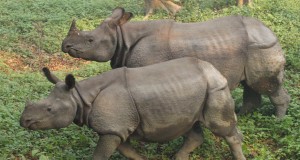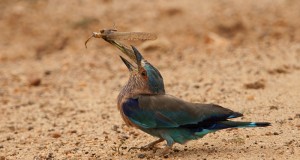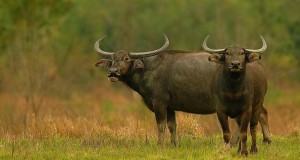One possible meaning of Chitin is “Heart of the Jungle” and it could not be more aptly described. With its tropical creeper-clad forests, great meandering rivers, lush seas of tall elephant grass, and the magnificent backdrop of the Himalaya in the distance, Chitwan is a most romantic jungle. And for its 370 sq miles (960 sq km), it has a richness and variety of wildlife matched by few other parks.
Until the 1950s, a virulent form of malaria prevalent in the region kept Chitwan relatively free of human settlement. Between 1846 and 1950, when Nepal was ruled by the Rana prime ministers, Chitwan was a hunting reserve, exclusively for the ruling classes. It was jealously guarded, if only to preserve it for more hunting. During that period, Chitwan was the venue of many a grand hunt to which the royalty of Europe and India, and the top brass of the British Raj, were often invited. These hunts were lavish operations with several hundred elephants and beaters being employed to round up and drive big game towards the shooters.
Massive Slaughter: However, several years were soften allowed to lapse between such massive hunts; they were not always held in the same area, and the habitat was left relatively intact, so the hunted species recovered their losses fairly rapidly. In the last hunt of 1938-9, in which the then Viceroy of India, Lord Linlithgow, also took part, a record bag of 120 tiger, 38 rhino, 27 leopard and 15 bear was taken. That so much big game was still there to shoot in spite of two previous hunts in the same decade indicates what an incredible wildlife haven Chitwan must have been. In 1950 the Ranas fell from power and the new government opened up Chitwan for settlement. A malaria eradication program was launched in 1954 to attract settlers from the overpopulated hills and by 1960 Chitwan was declared free of malaria. The human population rose from 36,000 in 1950 to 100,000 in 1960 and extensive forest areas were cleared for cultivation. Poaching was rampant, both for the pot and for money, with the rhino being the main target since its horn fetched a handsome price.
fell from power and the new government opened up Chitwan for settlement. A malaria eradication program was launched in 1954 to attract settlers from the overpopulated hills and by 1960 Chitwan was declared free of malaria. The human population rose from 36,000 in 1950 to 100,000 in 1960 and extensive forest areas were cleared for cultivation. Poaching was rampant, both for the pot and for money, with the rhino being the main target since its horn fetched a handsome price.
When in 1962 a rhino sanctuary was declared south of the Rapti river the barasingha ( Cervus duvauceli) and the wild buffalo (Buhalus bubalis) had already be- come extinct. And despite the efforts of the 130-strong armed guards, called Gainda Gasti or Rhino Patrol, poaching continued and by the 1960s only about 100 rhinos remained, down from 800 2000 in 1950.
Chitwan was finally gazetted as Nepal’s first national park in 1973 and a few years later a contingent of the Royal Nepalese Army was called in to combat poaching. Ever since, poaching of rhino within the park has been almost unheard of, although some does take place outside its limits. 
The park headquarters are at Kasara Durbar where an old hunting lodge houses the offices and a small museum. Near Kasara is the Charial Project and at Sauraha a visitors center, which provides information on the park. The network of roads in Chitwan is not very extensive but adequate for safaris by four-wheel drive vehicles. It is managed and administered by the National Parks and Wildlife Conservation Department.
Topography: Along the length of Nepal, in the middle, runs the Mahabharat Range; viewed from the plains, it is a blue mass of mountains. To its south, and almost parallel to and hugging it, runs a lower range of broken hills called the Siwalik. At times, such as in Chitwan, the two ranges separate and enclose huge flat valleys known as doons.
The park straddles the Siwalik range, the highest point in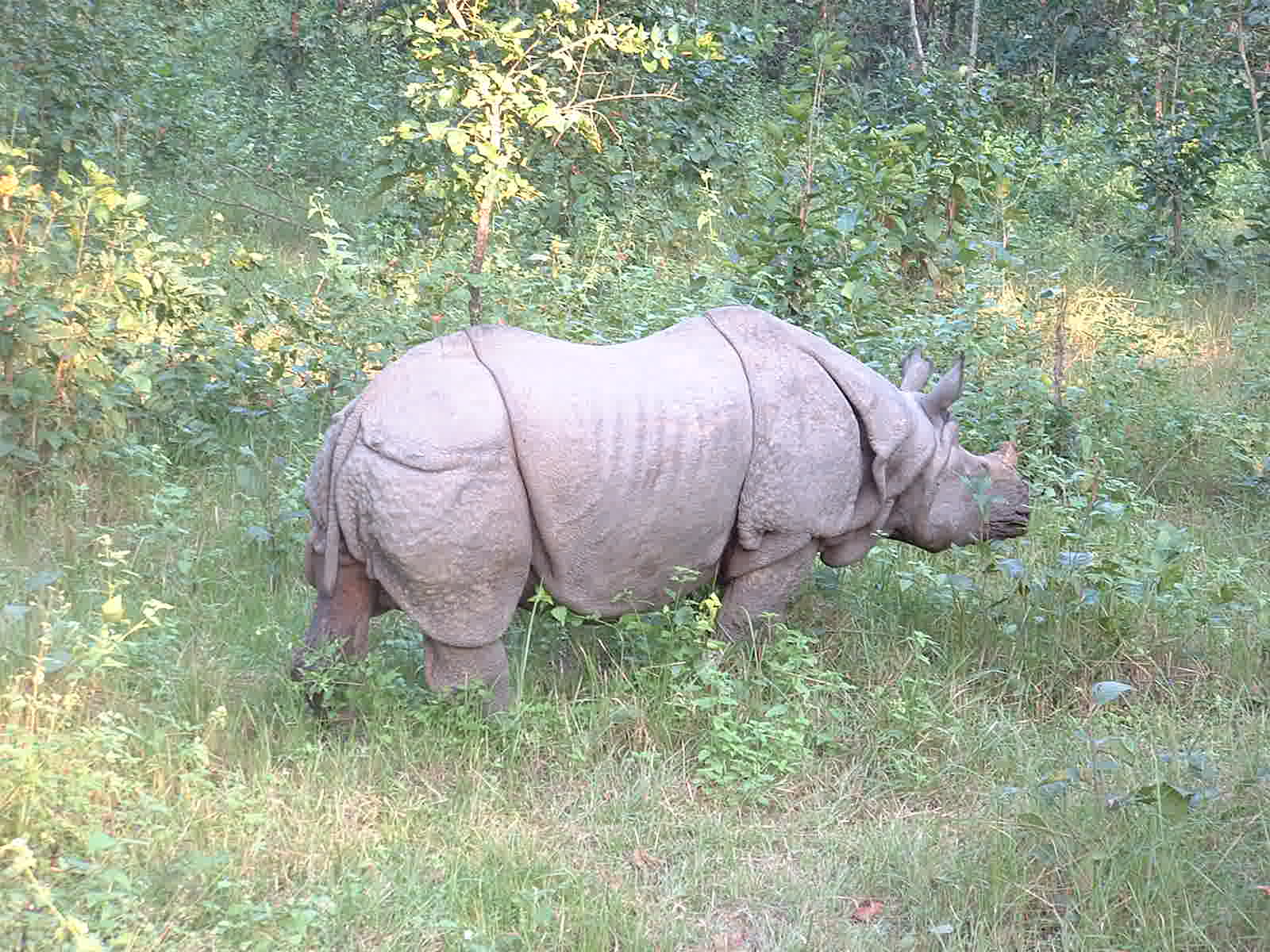 it being about 2000 feet (600 meters). Although much of it is hilly, a portion of it lies on the floodplain of three large rivers, the Reu, the Rapti and the Narayani, at an elevation of about 465 feet (140 meters).
it being about 2000 feet (600 meters). Although much of it is hilly, a portion of it lies on the floodplain of three large rivers, the Reu, the Rapti and the Narayani, at an elevation of about 465 feet (140 meters).
Much of the park is bounded by these rivers and their tributaries. Both the Rapti and its tributary, the Reu, are low during the dry months (December to April) and are fordable for four-wheel drive vehicles at a few places. But during the monsoon, after a heavy downpour, flash floods turn them into raging torrents and hundreds of trees may be washed downriver. During such times even the pluckiest of elephants will refuse to cross them. These two rivers meet about half a mile (one km) east of where they link with the huge Narayani river, which has its origins high up in the Tibetan plateau. It meanders through the flat valley floor and forms a series of large gravel islands, known as bandarjhula, from Sigraulighat to Amaltarighat. The Narayani eventually cuts a narrow gorge in the Siwalik and becomes the Gandak in India before joining the holy Ganga — the Ganges.with high humidity most of the year. In March and April the air is relatively dry.
Apart from the cool months of December to February, the weather is generally hot during the day, particularly from May to September. Mid-June heralds the coming of the monsoon, which is the most dramatic time of year, with heavy showers and occasional floods. After the monsoon the jungle is lush and green and the sky crystal clear, with the snow-covered Himalaya 50 60 miles (80 100 km) away, clearly visible, especially in the evening. During the winter months a thick mist descends on the forest around 10 p.m. and persists into the late morning. The humidity reaches its peak in the early hours of the morning and the dew dripping from the trees onto the forest litter below makes a sound loud enough to convince newcomers to Chitwan that it is raining outside.
February, the weather is generally hot during the day, particularly from May to September. Mid-June heralds the coming of the monsoon, which is the most dramatic time of year, with heavy showers and occasional floods. After the monsoon the jungle is lush and green and the sky crystal clear, with the snow-covered Himalaya 50 60 miles (80 100 km) away, clearly visible, especially in the evening. During the winter months a thick mist descends on the forest around 10 p.m. and persists into the late morning. The humidity reaches its peak in the early hours of the morning and the dew dripping from the trees onto the forest litter below makes a sound loud enough to convince newcomers to Chitwan that it is raining outside.
Two Types of Forest: The vegetation of Chitwan is tropical moist deciduous and two main types of forest may be recognized; the sal forest and the floodplain forest. On high ground and in the hills, where drainage is good and flooding does not occur, is the sal V forest, so called after the dominant tree, sal (Shorea robusta). This forest covers roughly three-fourths  of the park area and attains a height of 130 feet (40 meters) or more at the base of the hills but becomes stunted higher up. A common associate of sal is saj (Terminal tomentosa), another large tree, easily recognized by its gray bark that resembles the skin of a crocodile. The kusum tree (Sehleichera trjuga) bursts into a riot of red when the new leaves sprout in February-March, later turning to green, and the large-leaved tantari ( Dillenia pentagyna), a medium-size tree, bears clusters of bright yellow flowers in the late spring. Other components of the sal forest are the sturdy karam or haldu (Edina cordifolia) and the middling-size sandan ( Ougenia dalbergoides).
of the park area and attains a height of 130 feet (40 meters) or more at the base of the hills but becomes stunted higher up. A common associate of sal is saj (Terminal tomentosa), another large tree, easily recognized by its gray bark that resembles the skin of a crocodile. The kusum tree (Sehleichera trjuga) bursts into a riot of red when the new leaves sprout in February-March, later turning to green, and the large-leaved tantari ( Dillenia pentagyna), a medium-size tree, bears clusters of bright yellow flowers in the late spring. Other components of the sal forest are the sturdy karam or haldu (Edina cordifolia) and the middling-size sandan ( Ougenia dalbergoides).
Giant vines and creepers, such as debre lahara (Spatholobus parviflorus) and bhorla ( Bauhinia vahlii) twine upwards, using the larger trees for support. Sometimes a branch or a whole tree may collapse under their weight. The trees and their limbs also harbor several species of orchid and other epiphytes. On the very high ridges of the Siwalik grow sallo or chir pine (Pinus roxhurghii).
On the floodplain, which is prone to waterlogging and flooding during the monsoon, patches of grassland and nverine forest occur. 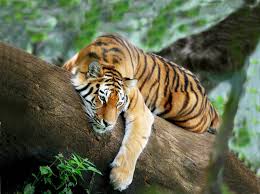 Dense stands of elephant grass, often 20 feet (six meters) high, are composed of Saccharurn spp., Phragmites karka, Themeda villosa, Arundo donax and Arundinella nepalensis. Some grasses are shorter, usually under seven feet (two meters) tall, such as Imperata cylindric and Bothriodoa interrnediaa, and are commonly found in old village sites, although taller species are gradually displacing the short grasses. In Chitwan, most grasses flower between August and November, different species at different times — and there are many species! The change of color of the grass canopies from white to purple to yellow and various shades of pastel is a memorable sight.
Dense stands of elephant grass, often 20 feet (six meters) high, are composed of Saccharurn spp., Phragmites karka, Themeda villosa, Arundo donax and Arundinella nepalensis. Some grasses are shorter, usually under seven feet (two meters) tall, such as Imperata cylindric and Bothriodoa interrnediaa, and are commonly found in old village sites, although taller species are gradually displacing the short grasses. In Chitwan, most grasses flower between August and November, different species at different times — and there are many species! The change of color of the grass canopies from white to purple to yellow and various shades of pastel is a memorable sight.
Interspersed in the grassland are trees such as shisham ( Dalbergia sissoo), khair (Acacia catechu) and simal (Bomhax ceiha), especially on mid-river gravel islands and on the sandbanks of the Reu, Rapti and Narayani rivers. Both shisham and khair average about 45 feet (14 meters) in height but the simal is the largest tree in the park. Its flowers attract a variety of birds in the spring and during the course of a day dozens of species may be spotted in a single tree.
Mature riverine forests are often dense with a great variety of shrubs and other trees. In moist places, such as the Itcharni Tappu and other areas near Sauraha, there are thick patches of bhellar (Trewia nudiflora). The dark crooked skeletons of dhak (Butea monosperma) suddenly burst into flower in February and arc aptly called “Flame of the Forest.”
The beautiful white flowers of bhanti ( Clerodendron viscosum), seen in March and April, have a lovely fragrance and attract numerous colorful butterflies and bees. Also in moist spots, several kinds of strangler figs (Ficus spp.) may be seen draped over their hosts, at varying stages of takeover. Foxtail orchids decorate some trees with their purple blossom in April, and the magnificent orange flowers of sungawa (Dendrobium densiflorum) in June-July.
Fire, an Ecological Factor: Apart from rainfall and flood, an important factor in the ecology of Chitwan is fire. Each year some 50,000 to 100,000 villagers enter the park for two weeks, some time in December and January, to collect thatch grass and reeds, both vital building materials for their houses. Having reaped their harvest, they set fire to the grassland and the fire  spreads into the hills. Burning is intermittent and continues until the end of April or the beginning of May, when the pre-monsoon showers put an end to it. These fires have been an annual event, perhaps for hundreds of years, and this must surely affect the composition of the forest. Perhaps it explains the predominance of fire-tolerant species, such as sal and simal, and also why tall coarse grasses are gradually replacing the short grass from old village sites. Burning effectively “opens up” the grassland and the forest and the leaf-fall of spring improves visibility even further, so wildlife sightings at this time of the year are particularly good. Regrowth of grass is fast and herbivores concentrate on the once burnt grassland to graze on the succulent new grasses, and chital herds a hundred strong may sometimes be seen.
spreads into the hills. Burning is intermittent and continues until the end of April or the beginning of May, when the pre-monsoon showers put an end to it. These fires have been an annual event, perhaps for hundreds of years, and this must surely affect the composition of the forest. Perhaps it explains the predominance of fire-tolerant species, such as sal and simal, and also why tall coarse grasses are gradually replacing the short grass from old village sites. Burning effectively “opens up” the grassland and the forest and the leaf-fall of spring improves visibility even further, so wildlife sightings at this time of the year are particularly good. Regrowth of grass is fast and herbivores concentrate on the once burnt grassland to graze on the succulent new grasses, and chital herds a hundred strong may sometimes be seen.
In and Around the “Tales “: The floodplain is crisscrossed by numerous seasonal water channels and dotted with marsh, swamp and lakes. Only a handful of lakes are of any size; Tamar Tal and Lame Tal near Kasara Durbar, and Dhakre Tal, Lame Tal and Devi Tal near Tiger Tops. The last is the largest and most spectacular of all.
These lakes are the rhino’s favorite haunts and 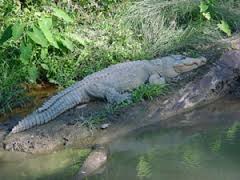 also support a number of water birds, fish, turtle and marsh mugger (Crocodylus palustris). The mugger may grow to over 10 feet (three meters) long and with its blunt nose and huge jaws lined with dirty yellow teeth is sinister looking, the wavy outline of Strangler fig.its mouth giving the impression of a nasty smile. The mugger will eat anything that it can overpower and kill, from birds and amphibians to deer, wild boar and even python. They prefer enclosed waters but are also found in rivers.
also support a number of water birds, fish, turtle and marsh mugger (Crocodylus palustris). The mugger may grow to over 10 feet (three meters) long and with its blunt nose and huge jaws lined with dirty yellow teeth is sinister looking, the wavy outline of Strangler fig.its mouth giving the impression of a nasty smile. The mugger will eat anything that it can overpower and kill, from birds and amphibians to deer, wild boar and even python. They prefer enclosed waters but are also found in rivers.
The gharial (Gavialis gangeticus), on the other hand, lives only in rivers and feeds largely on fish. Easily recognized by its slender snout, it is larger than the mugger and may reach 16 feet (five meters) in length. The Narayani, with about 40 adults, has the largest single concentration of wild gharial anywhere. Several young gharial, artificially hatched and hand reared at the Charial Project near Kasara Durbar, have been released in batches since 1980 and many have survived. The gharial is, however, very wary of man and will slither into the river even when as far as 150 feet (46 meters) away. But look for their tell-tale eyes and nostrils gleaming over the surface of the water. The best time of year to see crocodiles is winter (October to February) when they come out of the water and bask in the sun, often all day long.
Another peculiar aquatic predator in the Narayani river is the rare Gangetic dolphin ( Platanista gangetica). About seven feet (two meters) long when adult, this spindleshaped animal feeds on crustaceans and fish on the riverbed and breaks the surface every minute or so to breathe. Its hissing sound is unmistakable and it may be seen at the Narayani-Rapti confluence from July to September and at Amaltarighat for most of the year, except when the water is low from January to April. The smooth-coated otter 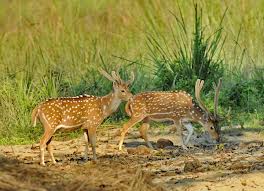 (Lutra perspicillata) is another common aquatic predator and to watch a family playing outside its den is an endearing sight. Indian pythons (Python molurus) are common near large bodies of water and these heavy reptiles, which may reach 16-20 feet (five-six meters) in length, sometimes waylay deer which come to drink. An adult python can swallow a full-grown hog deer (Axis porcinus), weighing 45 lb (20 kg) and then go without food for months.
(Lutra perspicillata) is another common aquatic predator and to watch a family playing outside its den is an endearing sight. Indian pythons (Python molurus) are common near large bodies of water and these heavy reptiles, which may reach 16-20 feet (five-six meters) in length, sometimes waylay deer which come to drink. An adult python can swallow a full-grown hog deer (Axis porcinus), weighing 45 lb (20 kg) and then go without food for months.
Birds — Resident and Migratory: Chitwan is a bird-watcher’s paradise. It is not unusual to spot a hundred species in a single day, depending of course on the time of year. Over 440 species of birds have been recorded, of which a little under half are year-round residents. These include the beautiful Indian peafowl( Pavo crixtatux) common in the floodplain, openbill stork (Anastomus oscitanx) near marsh and lakes, small pied kingfisher (Ceryle rudix) over open rivers, and three-toed goldenbacked woodpecker (Dinopiuni shorii) in the sal forest. “Men blackheaded oriole ( Orioles vanthornus) fills the forest with song, and the loud honking of the giant hornbill ( Beceros bicornis) may be heard.
Of the many winter visitors, such as ducks, geese, waders and leafwarblers, the brahminy duck (Tadorna ferreginia) is the most conspicuous, not only because of its numbers but also its colors and call.
Another distinguished winter visitor is the huge blacknecked stork (Xenorhynchus asialicus), a rare bird seen on open river banks. By comparison, the summer visitors are much fewer but include such colorful birds  as the paradise flycatcher ( Terpsiphone paradisi) and the golden oriole (Orioles orioles) which arrive in February – March, and the Indian pitta ( Pitta brachyura) and green-breasted pitta (Pitta sordid ) in April-May.
as the paradise flycatcher ( Terpsiphone paradisi) and the golden oriole (Orioles orioles) which arrive in February – March, and the Indian pitta ( Pitta brachyura) and green-breasted pitta (Pitta sordid ) in April-May.
Among the rarities of Chitwan’s birds are the grayheaded fishing eagle (Ichthyophaga ichthyaetes), seen near swamps and lakes; the great slaty woodpecker (Muleripicus pulverulentus) near the forested hill streams; and the yellow bittern (Ixobrychus sinensis) in tall marsh grass. In late spring the rare Bengal florican (Eepodotis bengalensis) males may be seen in the grassland, displaying to their mates, their white wings in sharp contrast to their black bodies.
The best months for bird-watching are February and March, when the winter visitors are still around, the summer visitors have started to arrive, and the breeding birds become very vocal and conspicuous. Also, the visibility is at its best because of burning and leaf-fall, and the trees are in blossom, which attracts the birds.
Spotting the Mammals: In terms of seeing wildlife, the floodplain belt is the best as it harbors a larger concentration of animals than the sal forest. Chitwan’s estimated 400 rhinos ( Rhinoceros unicornis) are found almost wholly in the grassland and rivenne forest. Chitwan is one of the two last strongholds for this endangered rhino (Kaziranga in Assam being the other), and it harbors a quarter of the world’s total.
In the Siwalik hills is the gaur (Bos gaurus), the most magnificent among hoofed animals. During the spring the gaur descend to the grassland in search of new shoots after the fires and the forests around Devi Tal, Tamar Tal, Dumaria and Kha-gendramalli are particularly good spots for seeing them in February-April.
Of the four species of deer found in Chitwan, the hog deer (Axis porcinon) is restricted almost exclusively to the grassland, and the chital ( Axis axis) to the lowland parts as it avoids sloping ground and hilly terrain. The sambar ( Cervus unicolor) and the barking deer ( Muntiacon muntjak) are found throughout the park.
Also common throughout the park, but mainly in the floodplain, is the wild boar (Son scrota) which often lives in large groups of 20, even 30 or more, animals, although six- 10 is the average. The wild boar and the four kinds of deer all form important prey species for the tiger ( Panthera tigns) and the leopard ( Panthera pardon ).
Monkeys also feature strongly on the leopard’s menu and two species occur in the park. The handsome gray langur ( Presbytis entellus) with long limbs and tail and a black face, lives mainly in the sal forest in troops of 10-20 individuals. Langurs are not particularly shy and will allow a fairly close approach, but not the Chitwan rhesus macaque (Macaw mulatto). Unlike their counterparts found near railway platforms and temples which show complete contempt for man, the rhesus of Chitwan is extremely shy.
The Rare Ones and the Great Cats: Although Chitwan has over 50 species of mammals, they are often not easily seen because of their nocturnal and secretive habits. Rare mammals in Chitwan include the wild dog (Cuon alpinus ), the serow ( Capricornis sumatraensis), the hyena ( Hyaena hyaena), the spotted linsang (Pnonodon pardicolor) and the rate! ( Mellivora capensis).
The two large predators in the park are the tiger and the leopard. They do not mix well — the tiger may attack and even kill the leopard. The tiger controls the prime habitat with the leopard often moving out to the edge of the park. However, the two can live side by side. Because of Chitwan’s closed environment, encounters between the two are reduced somewhat. Poor visibility aids the leopard and by altering his schedule and becoming more diurnal he may share the same area as the tiger. Moreover, competition between the two is further reduced by the tiger’s preference for larger prey species than those of the leopard. Chitwan has a fair number of leopards but they are not often seen. It is estimated that about 40 breeding adult tigers exist in the park, which makes a total of up to 100, including cubs, subadults and transients. You may sometimes see a tiger, a pair, or exceptionally a family of female and cubs, but despite such good numbers tiger sightings are not common.



